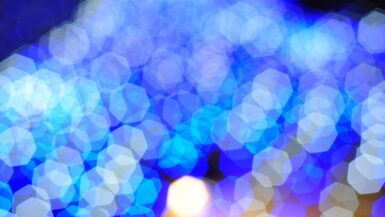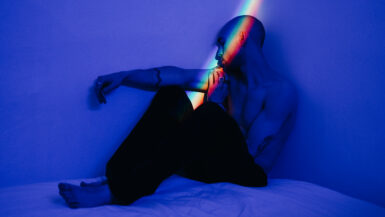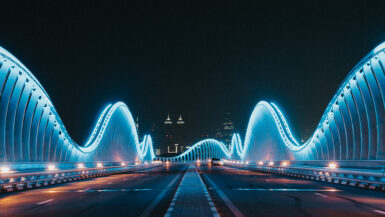In today’s technology-driven world, the effects of blue light exposure on our mental and physical well-being have become a topic of growing interest and concern. The Connection Between Blue Light and ADHD Symptoms delves into the complex relationship between blue light emitted from electronic devices and the exacerbation of symptoms associated with Attention Deficit Hyperactivity Disorder (ADHD). Drawing from scientific research and expert opinions, this article explores the potential consequences of excessive blue light exposure on sleep patterns, productivity, and overall cognitive function, particularly among individuals with ADHD. By shedding light on this critical issue, we aim to offer valuable insights and practical solutions to mitigate the impact of blue light on our daily lives and promote a healthier balance between productivity and restorative rest.
Understanding Blue Light and Its Sources
In order to grasp the connection between blue light and ADHD symptoms, it is essential to first understand what blue light is and its various sources. Blue light is a part of the visible light spectrum, comprising wavelengths of around 400 to 495 nanometers. While it occurs naturally in sunlight, blue light is also emitted artificially from electronic devices, such as smartphones, tablets, computers, and LED lighting. With the increasing reliance on these devices in our daily lives, our exposure to blue light has significantly increased, potentially affecting our sleep patterns, cognitive function, and overall well-being.
The Role of Sunlight in Blue Light Exposure
The primary source of blue light is sunlight, which contains a balanced spectrum of colors, including red, orange, yellow, green, and blue. During the day, exposure to sunlight helps regulate our circadian rhythm, the natural sleep-wake cycle that governs various physiological processes. Blue light, in particular, plays a crucial role in the suppression of melatonin – the hormone that helps induce sleep – keeping us awake and alert. However, excessive exposure to blue light in the evening can disrupt our circadian rhythm, leading to sleep disturbances and exacerbating ADHD symptoms.
Artificial Sources of Blue Light: Electronic Devices and LED Lighting
While sunlight is the most significant natural source of blue light, our modern lifestyles have introduced several artificial sources as well. Electronic devices such as smartphones, tablets, laptops, and computer screens emit blue light that may interfere with our sleep patterns and cognitive function. Moreover, LED lights and compact fluorescent lamps (CFLs) used in homes and workplaces also contribute to the increased exposure to blue light. As a result, our eyes are constantly exposed to this high-energy wavelength, even during the evening and nighttime hours.
How Blue Light Affects Sleep and Performance at Work
Excessive exposure to blue light, especially during the evening, has been shown to negatively impact sleep quality and duration. This can further lead to reduced productivity, impaired cognitive function, and heightened ADHD symptoms. To learn more about the relationship between blue light and work performance, take a look at the comprehensive article on How Blue Light Affects Sleep and Performance at Work.
In summary, understanding the sources of blue light and their potential impact on our sleep patterns and cognitive function is crucial for individuals with ADHD. By being aware of the risks associated with excessive blue light exposure, we can take proactive steps to reduce its negative consequences and promote a healthier balance between screen time, sleep, and productivity.
Strategies to Reduce Blue Light Exposure
Given the potential impact of blue light exposure on sleep patterns and ADHD symptoms, it is essential to adopt effective strategies to mitigate its effects, particularly during the evening and nighttime hours. The following subsections outline practical steps that individuals can take to reduce blue light exposure, thereby promoting better sleep, enhanced productivity, and overall well-being.
Embrace a Digital Sunset
One effective way to reduce blue light exposure is by implementing a “digital sunset,” which involves setting a specific time in the evening to stop using electronic devices. By disconnecting from screens an hour or two before bedtime, you can allow your body to gradually wind down and prepare for sleep, as the natural production of melatonin is less likely to be disrupted.
Adjust Device Screen Settings
Many smartphones, tablets, and computers now offer built-in settings that help minimize blue light emissions. Features such as Night Shift on iOS devices, Blue Light Filter on Samsung devices, and Night Light on Windows 10 computers allow users to adjust the color temperature of their screens, reducing the amount of blue light emitted. Make use of these settings, especially during evening hours, to minimize the impact of blue light on your sleep patterns and ADHD symptoms.
Invest in Blue Light Blocking Glasses
Blue light blocking glasses are specifically designed to filter out blue light emitted from electronic devices and artificial lighting. By wearing these glasses during screen time or while working under LED or CFL lighting, you can effectively reduce your exposure to blue light and its potential consequences on sleep and cognitive function.
Opt for Warmer Light Sources
Consider replacing LED and CFL lights in your home with incandescent bulbs or warm-colored LED lights, which emit lower levels of blue light. This simple switch can create a more relaxing environment, conducive to winding down in the evening and preparing your body for sleep.
Establish a Relaxing Bedtime Routine
Developing a consistent bedtime routine that promotes relaxation can help mitigate the effects of blue light exposure on sleep and ADHD symptoms. Engage in activities such as reading a physical book, practicing meditation, or taking a warm bath to signal to your body that it’s time to wind down and prepare for restful sleep.
By adopting these strategies to reduce blue light exposure, individuals with ADHD can minimize the negative consequences on their sleep patterns and overall well-being. Through a combination of mindful device usage, adjustments to lighting, and the establishment of healthy sleep routines, it is possible to strike a balance between our reliance on technology and our need for restorative rest.
Effects of Blue Light on Sleep Patterns
One of the key concerns surrounding blue light exposure is its impact on sleep patterns, especially among individuals with ADHD. As sleep disturbances and irregular sleep patterns are common symptoms of ADHD, it is crucial to explore the influence of blue light on our natural sleep-wake cycle and the potential consequences it may have on our overall well-being.
Disruption of Circadian Rhythm
As mentioned earlier, blue light plays an essential role in regulating our circadian rhythm, which is the natural sleep-wake cycle that governs various physiological processes. During the day, exposure to blue light helps keep us awake and alert by suppressing melatonin production. However, excessive exposure to blue light in the evening can interfere with our circadian rhythm, leading to difficulty falling asleep or maintaining a regular sleep schedule. This disruption can exacerbate ADHD symptoms, as inadequate sleep can further impair cognitive function and emotional regulation.
Reduced Sleep Quality and Duration
Blue light exposure during nighttime hours has been associated with reduced sleep quality and duration. Studies have shown that individuals who use electronic devices before bedtime experience delayed sleep onset, fragmented sleep, and a decrease in the overall amount of deep, restorative sleep. This can lead to increased daytime fatigue, impaired concentration, and heightened ADHD symptoms, further impacting daily functioning and productivity.
Exacerbation of ADHD Symptoms
Given the relationship between blue light exposure, sleep disturbances, and ADHD symptoms, it is essential to recognize the potential consequences of excessive screen time, particularly during the evening hours. As sleep plays a crucial role in cognitive function, emotional regulation, and overall well-being, any disruption to healthy sleep patterns can have a detrimental effect on individuals with ADHD. By understanding the impact of blue light on sleep patterns, we can take proactive measures to mitigate its effects and foster a more conducive environment for restorative sleep.
Importance of Sleep Hygiene
Considering the effects of blue light on sleep patterns, it is crucial to prioritize good sleep hygiene to promote healthy sleep and overall well-being. Establishing a consistent sleep schedule, creating a relaxing bedtime routine, and minimizing blue light exposure, particularly during the evening hours, can significantly improve sleep quality and duration. Improved sleep hygiene can, in turn, contribute to better management of ADHD symptoms, enhanced productivity, and a more balanced lifestyle.
By acknowledging the impact of blue light on sleep patterns and implementing strategies to reduce exposure, individuals with ADHD can improve their sleep quality and overall well-being. With a deeper understanding of the connection between blue light and ADHD symptoms, we can take the necessary steps to promote a healthier balance between technology usage and restorative sleep, ultimately fostering a more productive and fulfilling life.
Improving Sleep and Productivity with Blue Light Filters
Given the connection between blue light exposure and the exacerbation of ADHD symptoms, it is crucial to explore the potential benefits of using blue light filters to mitigate such effects. Blue light filters, either in the form of screen protectors, software settings, or eyewear, can effectively reduce the amount of blue light emitted by electronic devices, thereby promoting better sleep and productivity. In this section, we will delve into the various types of blue light filters available and discuss their potential benefits for individuals with ADHD.
Blue Light Filter Software and Applications
One of the most accessible and cost-effective ways to reduce blue light exposure from electronic devices is through the use of software and applications designed to adjust screen color temperature. Many operating systems, such as Windows 10 and macOS, offer built-in blue light filter settings, such as Night Light and Night Shift, respectively. Additionally, there are third-party applications like f.lux® that can be installed on devices to automatically adjust screen color temperature based on the time of day. By using these tools, individuals with ADHD can minimize the impact of blue light exposure on their sleep patterns and overall well-being, without sacrificing screen time or productivity.
Screen Protectors with Blue Light Filtering Technology
Another effective method to reduce blue light exposure is through the use of screen protectors that incorporate blue light filtering technology. These screen protectors can be applied to smartphones, tablets, and computer screens, and they work by filtering out a significant portion of blue light emitted by the device. By using a blue light filtering screen protector, individuals with ADHD can continue to use their electronic devices while minimizing the potential impact on their sleep patterns and cognitive function.
Blue Light Blocking Eyewear
For those seeking a more comprehensive solution to blue light exposure, blue light blocking eyewear offers an effective and stylish option. These glasses are specifically designed with lenses that filter out blue light, reducing eye strain and minimizing the potential effects on sleep and ADHD symptoms. Available in a variety of styles and designs, blue light blocking glasses can be worn during screen time or while working under artificial lighting, providing a versatile and practical solution to blue light exposure.
Enhancing Sleep and Productivity through Blue Light Management
By incorporating blue light filters into their daily routines, individuals with ADHD can effectively reduce their exposure to blue light, ultimately promoting better sleep and increased productivity. Whether opting for software applications, screen protectors, or blue light blocking eyewear, the key is to find a solution that best suits one’s needs and preferences. By managing blue light exposure, individuals with ADHD can take proactive steps towards improving their sleep patterns, cognitive function, and overall well-being, creating a healthier balance between technology use and restorative rest.
How Blue Light Impacts ADHD Symptoms
While the connection between blue light exposure and sleep disturbances has been widely discussed, it is crucial to understand how blue light specifically impacts individuals with ADHD. In this subsection, we will delve into the various ways in which excessive blue light exposure may exacerbate ADHD symptoms, and explore the underlying mechanisms through which this connection is established.
Disrupted Sleep and the Vicious Cycle of ADHD Symptoms
One of the primary ways in which blue light impacts ADHD symptoms is by disrupting sleep patterns. As mentioned earlier, excessive exposure to blue light, particularly during evening hours, can interfere with the body’s natural sleep-wake cycle, leading to difficulty falling asleep and fragmented sleep. Since sleep disturbances are already common among individuals with ADHD, the additional disruption caused by blue light exposure can create a vicious cycle, further impairing cognitive function, emotional regulation, and overall well-being.
Increased Impulsivity and Screen Time
Impulsivity is a hallmark symptom of ADHD, and it can be exacerbated by excessive blue light exposure. The instant gratification offered by electronic devices can fuel impulsive behavior, leading to increased screen time and, consequently, more exposure to blue light. This increased exposure may further aggravate existing ADHD symptoms, making it harder for individuals to resist the lure of electronic devices and maintain a healthy balance between technology use and restorative rest.
Impaired Executive Functioning and Task Performance
Executive functioning, which includes skills such as planning, organizing, and time management, is often impaired in individuals with ADHD. Blue light exposure, particularly during nighttime hours, can further contribute to this impairment by disrupting sleep and reducing the overall amount of deep, restorative sleep. As a result, individuals with ADHD may experience heightened difficulties in managing tasks, completing work assignments, and maintaining focus, ultimately impacting their overall productivity and well-being.
Sensitivities to Artificial Lighting
Some individuals with ADHD may have heightened sensitivities to artificial lighting, making them more susceptible to the negative effects of blue light exposure. In these cases, prolonged exposure to blue light emitted by electronic devices and LED or CFL lighting may trigger discomfort, eye strain, and even migraines. These physical symptoms can further exacerbate ADHD symptoms and impair daily functioning, reinforcing the need to manage blue light exposure proactively.
Addressing Blue Light Exposure to Alleviate ADHD Symptoms
By understanding the various ways in which blue light exposure impacts ADHD symptoms, individuals can take proactive measures to mitigate its effects and improve their overall well-being. Strategies such as implementing a digital sunset, adjusting device screen settings, and investing in blue light blocking glasses can significantly reduce blue light exposure, ultimately promoting better sleep, enhanced productivity, and more effective management of ADHD symptoms. By addressing the connection between blue light and ADHD symptoms, individuals can work towards establishing a healthier balance between their reliance on technology and their need for restorative sleep, fostering a more fulfilling and balanced life.





Leave a reply